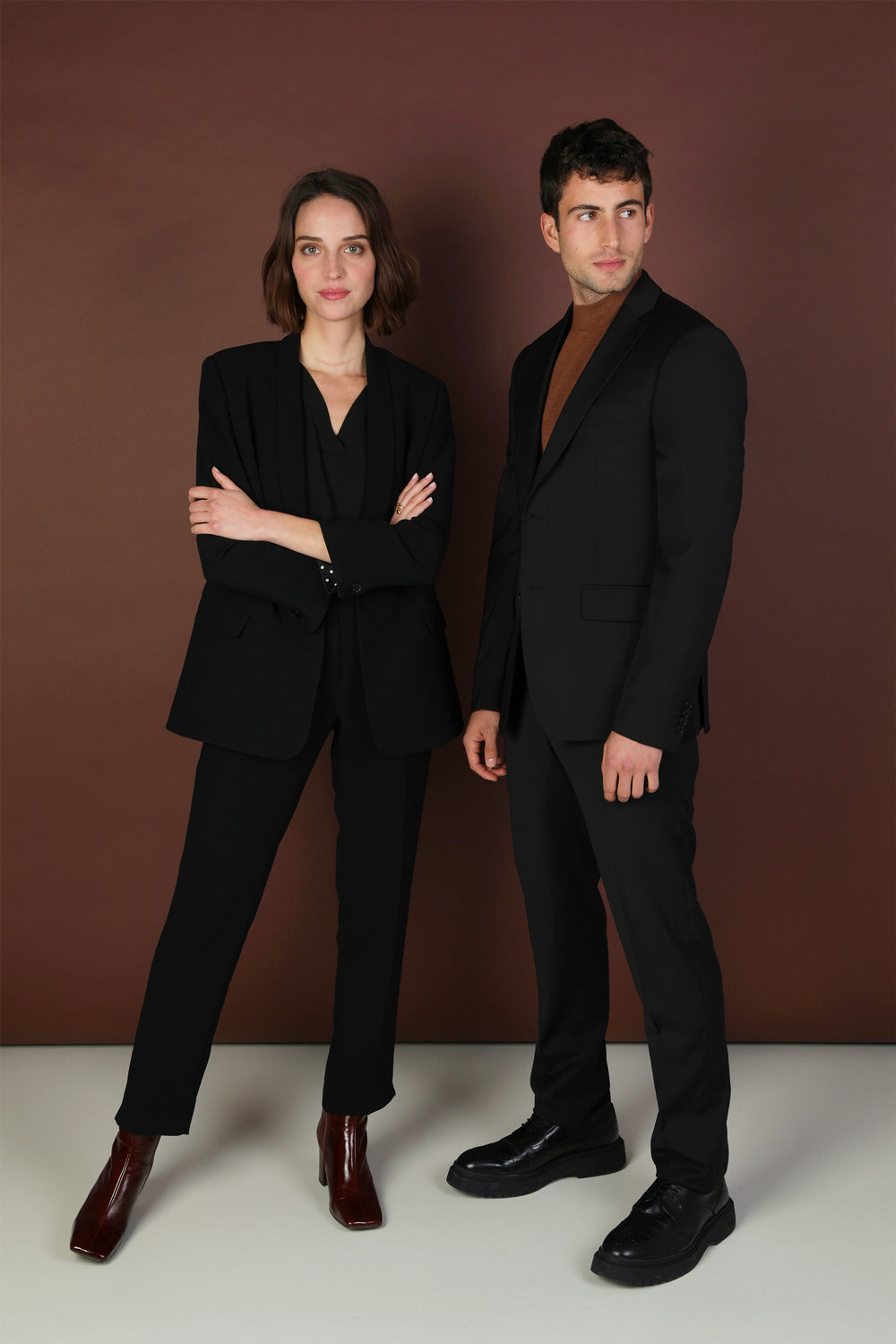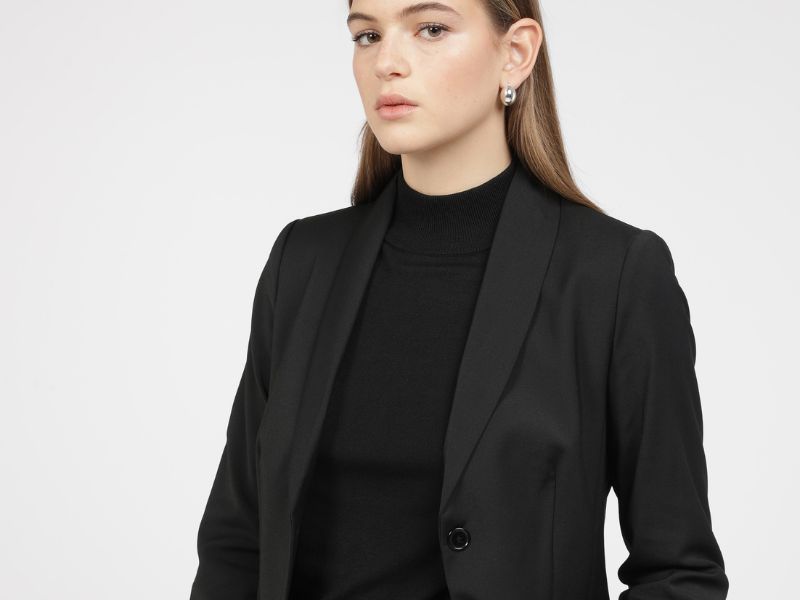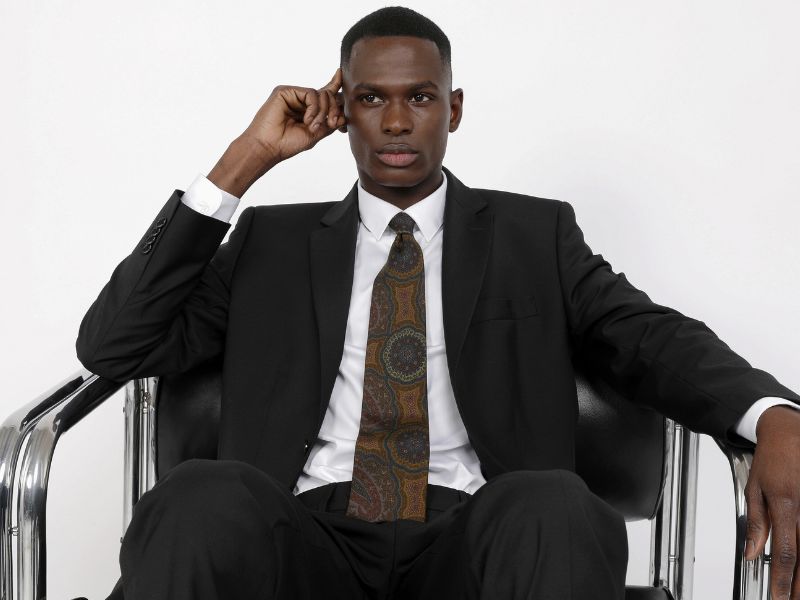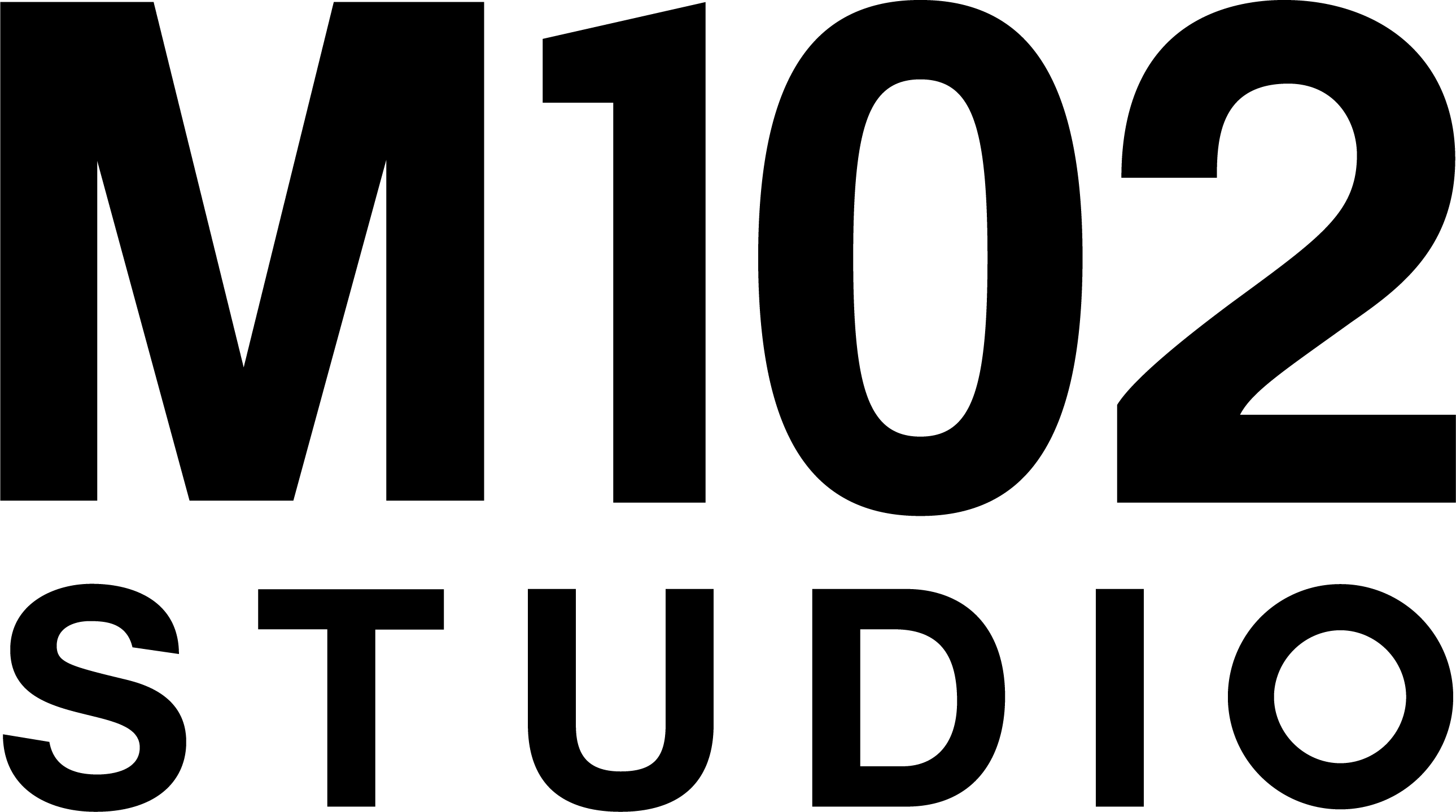Professional attire: 5 tips for an elegant, stylish combo

Does your profession or workplace require you to wear a stylish uniform instead of a typical work attire Here are our tips and tricks for adopting an elegant and refined style.
1. Analyse your business codes
It's obvious: the professional attire is your first image vector. That's why, before deciding on your professional outfit, make sure to fully understand the culture of the company you're in. What are its values? Does it have a charter? What are its dress codes? There are as many dress codes as there are industries. These codes subtly personalize themselves according to the brand's universe.
They can be classic if you work within a luxury house, a 5-star palace, or a high-end gourmet restaurant. On the contrary, the dress codes for work attire are different if you work in a spa, a wellness center, or a cosmetic surgery clinic. What is certain is that it is strategic to adapt your style accordingly without sacrificing your comfort and without adopting a common appearance.
2. Mix the styles
Mixing a classic room with a trendy room: a way to stand out while remaining professional is to mix different styles. Promote the diversity of your corporate uniform With a trendy side and a classic facet. In the same way as in interior decoration, everything designer will tell you that it is possible to mix classic styles and design styles. Always think that the perfect combo is: classic + trendy = trendy!
In our example, you can combine a classic shirt with a modern pair of pants and trendy shoes to create a unique look. Draw inspiration from current trends and adapt them to your own professional style. Avoid obvious pitfalls by blatantly copying the styles of others. Find the professional style that highlights you, much like the outfits created by Guillaume Henry, artistic director of Patou (LVMH), for So/Paris hotel (Sofitel Accord) a professional collection produced by MARCY PARIS, a leader in corporate wear, with its integrated studio M102.
3. Judiciously accessorise
Accessories make all the difference. They are key details: an elegant watch, a well-chosen scarf, or beautiful shoes can elevate your professional attire in an instant and make it more distinctive. Also, ensure that your clothes are well-ironed. Pay special attention to your belt, if applicable, your tie, and other accessories to ensure they are neat and coordinated with your outfit. Be attentive to details like sleeve cuff buttons as well. Every detail matters.
4. Invest in quality parts
Clothing with beautiful finishes always stands out. This is even more true when they have the role of embodying the image and prestige of your company. Opt for quality materials and well-tailored cuts that will give you an elegant professional look. Let's add that meticulous attention to details coupled with careful finishes imparts a discreet timeless style. In addition to being synonymous with quality, attention to detail is also your best ally for comfort. It enhances the aesthetics of your professional attire throughout your days and movements.
5. Ensure a perfect cut
It can't be emphasized enough: having a set of high-quality basics in your professional wardrobe is essential. This includes well-tailored shirts, pants or skirts with a natural drape, and blazers or jackets suitable for your work environment. A well-tailored garment is one that is cut and designed to fit comfortably to your silhouette while enhancing it. Here are some examples of features to look for to determine if your garment is well-tailored:
- The shoulder seams should align with the shoulders.
- The sleeves should stop at the wrist, with enough length to allow free arm movement.
- The shirt should be fitted but not too loose or tight around the chest, allowing freedom of movement, including buttons that should not pull at the chest.
- The jacket should hug the shoulders without excessive wrinkles.
- The jacket button should close easily without pulling or restricting breathing.
- The length of the jacket should generally stop at mid-buttocks or slightly lower.
- The waistband of the pants should be fitted without creating folds or gaps at the waist.
- Pants should rest slightly on the top of the shoes.
- The crotch should be well-fitted, neither too low nor too high.
- The dress should follow the contours of your body without being too tight or too loose.
- The seams and hems should be straight and regular.
- The skirt should be well-fitted around the waist and hips.
- The length of the skirt should be adapted to your body shape and the occasion.
By following these tips, you will be able to customize your professional attire in any situation. A well-chosen and well-maintained outfit will enhance your confidence and professional image, which is essential in the working world! If you have any doubts, contact us so that we can provide you with advice, expertise, and fashion know







